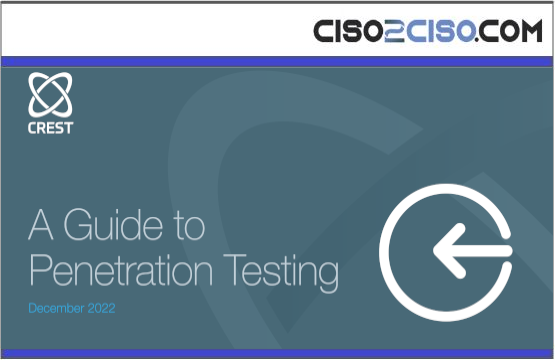The document titled “A Guide to Penetration Testing” is a comprehensive guide published by CREST in December 2022. It provides in-depth advice on establishing and managing a penetration testing program, aiming to help organizations conduct effective penetration testing as part of their technical security assurance frameworks.
Summary:
Purpose and Scope: The guide is designed to assist organizations in preparing for, conducting, and following up on penetration tests. It emphasizes the importance of conducting these tests enterprise-wide to identify vulnerabilities in IT systems and infrastructure. The guide is relevant for organizations that either perform their own penetration testing or procure these services from external providers.
Key Concepts:
- Definition and Importance: A penetration test, often referred to as a “pen test,” involves simulating an attack on an organization’s information security system to identify vulnerabilities. It uses both manual and automated techniques and is typically conducted by a qualified and independent tester.
- Types of Testing: The guide differentiates between various types of penetration testing, including application, infrastructure, mobile, wireless, and telephony penetration tests. It also explains the differences between penetration testing and vulnerability assessments.
Penetration Testing Process:
- Preparation: Establishing a governance structure for penetration testing, identifying target environments, and selecting suitable suppliers are crucial steps in the preparation phase. The guide emphasizes the need for a well-managed program that includes technical security assurance frameworks.
- Conducting Tests: The guide outlines the importance of agreeing on the testing style and type, identifying constraints, and using effective testing methodologies. The process involves researching, identifying, and exploiting vulnerabilities, followed by reporting key findings.
- Follow-Up: Post-testing activities include remediating identified weaknesses, addressing root causes, and initiating improvement programs. The guide stresses the importance of learning from the testing process to enhance future security measures.
Challenges and Considerations:
- Complexity and Risks: The guide acknowledges the complexities of penetration testing, including determining the scope of tests, managing the risks of potential system failures, and ensuring that vulnerabilities are addressed without giving a false sense of security.
- Maturity Assessment: A maturity model and assessment tools are provided to help organizations evaluate the effectiveness and maturity of their penetration testing programs.
Target Audience: The guide is aimed at IT, security, and project managers responsible for managing penetration testing programs. While initially designed for sectors with high regulatory demands, such as government and financial institutions, it is now applicable to a broader range of organizations due to the increasing prevalence of cyber threats.
Conclusion: The guide concludes by emphasizing the importance of continuous improvement and maturity in penetration testing programs. It encourages organizations to build on lessons learned from tests and to continuously refine their security measures to stay ahead of emerging threats.
This guide serves as a practical resource for organizations seeking to enhance their cybersecurity posture through effective penetration testing.
Views: 2




















































